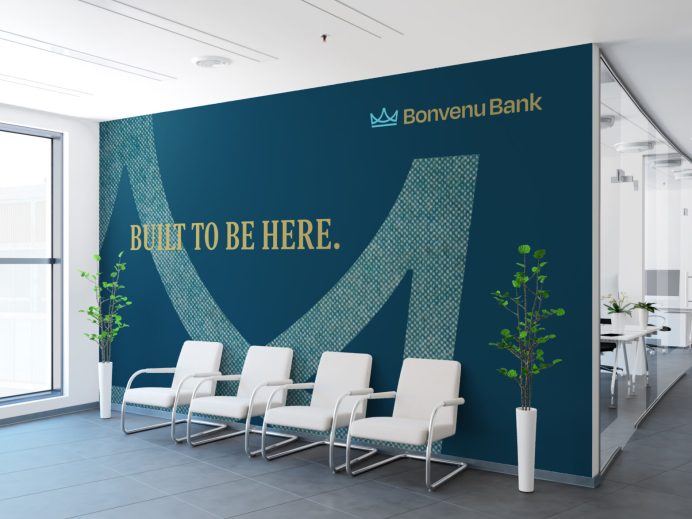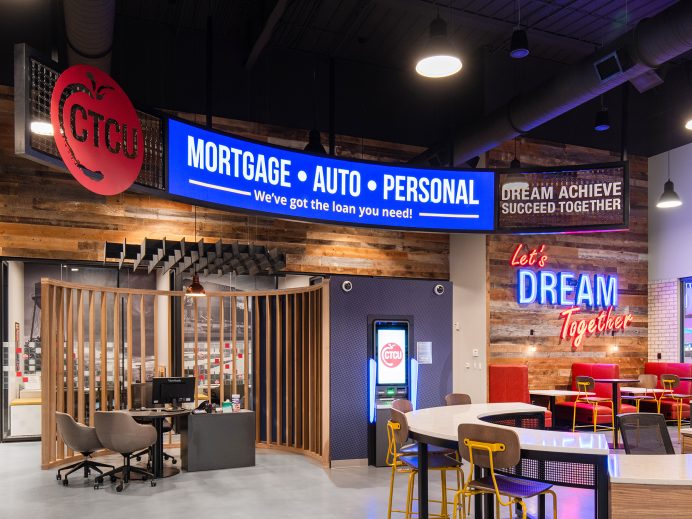
With M&A activity hitting its highest levels since 2007, more and more banks and credit unions are looking at smart strategies for strength – something especially critical for midsize and smaller FIs in today’s uber-competitive consumer landscape
But as two institutions come together, prioritizing and optimizing brand integration is critical for mitigating risk and setting a solid foundation for growth. Considerations for brand (early and often) in the due diligence period can help banks and credit unions: lessen consumer confusion in the market; minimize operational inefficiency; reduce customer and staff attrition; and optimize brand management.
While often thought of as a box-check in the M&A process, brand considerations are actually one of the most significant determinants for the ultimate success of a merger or acquisition. “Regardless of which side of a transaction you may find yourself on, experience and evidence show that a well-executed brand adds monetary value and helps unify merged/acquired companies,” according to Forbes’ Brand Value In Mergers And Acquisitions. “Effective brands help companies market and sell their services or products, but that is not all they do. Company brands drive real value, especially in the M&A process.”
Further, brand considerations can’t simply be a downstream activity flowing from a merger or acquisition. “While it makes sense why banks would want to merge, how they do it makes all the difference for their success,” according to Best Practices in Brand Integration. That how consideration takes upfront planning and a seat at the table for brand leaders during due diligence and throughout the M&A process to truly realize maximum value post-merger in both scope and strength. With brand as a top M&A consideration, banking leaders ensure the unified entity unlocks growth potential, creates cultural cohesion and increases brand awareness.
To make the most of brand during M&A, we’ve rounded up our top-four brand considerations during due diligence through to transaction close.
Consideration #1 – Cultural Alignment of Two Merging Brands
During M&A matchmaking, many banks and credit unions assess organizational culture and compare institutional philosophies and values. There is a direct line between how similar or dissimilar two cultures are and the subsequent complexity of the brand launch. But culture goes beyond how staff interact with each other and with customers. Merging institutions must consider leadership principles, communication styles and how employees bring core institutional values to life.
Cultural alignment under the brand umbrella ensures merged institutions can efficiently foster internal cohesion. A culture assessment during due diligence helps FIs anticipate and plan for potential points of friction or weakness – as well as how to leverage strengths and common bonds. This ensures staff are truly ready to deliver on the brand value that the merger was always intended to yield.
Consideration #2 – Creating Powerful, Ownable Names
The opportunity and ability to expand into new geographic areas and enhance an institution’s scale is a major reason FIs choose to merge or acquire. But does the acquiring brand’s name make sense in these new markets? How much effort and resource is necessary to explain the brand or make connections in the new context? Moreso, how much legal and conceptual ownability or equity would it have in a new geographic footprint?
As organizations expand their audience through M&A, there is a pressing need to address brand name challenges, especially as digital channels widen reach beyond geographic fence lines and create more overlap and confusion. Many FIs in growth mode bump into unexpected legal hurdles when their name moves into new competitive territory. It’s well worth the effort to assess naming options before the deal is done. Oftentimes, it turns out that rallying under a singular name is the most efficient way to benefit from unified brand power.
Consideration #3 – Address Brand Architecture
When organizations have grown through acquisitions, they may try to soften the impact of change by permitting brand autonomy and retention of original names. Realistically, though, the risks and opportunities related to brand architecture have changed a great deal in the financial industry over the last decade. Not addressing brand architecture upfront generates confusion about your institution’s capabilities and access, increases compliance and operational risk, reduces marketing and operational ROI, and ultimately, dilutes brand equity.
“Your brand power is directly related to the number of brands you have,” says Gina Bleedorn, CXO of Adrenaline. “If you have nine brands in the same market, you appear a ninth of your size.” Further, evolving circumstances in online and regulatory environments make maintaining separate brands a costly task, bleeding off marketing efficiency and requiring duplication of efforts. With a deeper understanding of brand architecture, bank executives can feel confident in the brand operating model they choose moving forward.
Consideration #4 – Continually Invest in Communication
The need for internal communication pre- and post-launch is one of the most underestimated elements of successful M&A. The surest way to distract leaders and staff from the crucial work of conversion is to inadequately plan internal communications at the beginning of M&A. Institutions cannot rely on a singular launch event, basic FAQs and cool new merch to fully prepare employees to champion the brand and inspire confidence from customers and prospects. Too often, all attention flips to the external, consumer and market-facing launch.
The most successful brands understand that a holistic communications strategy – methodically planned in advance and touching all audiences numerous times – is a foundational factor in the M&A process. Investing in ongoing brand communication helps demonstrate highly-valuable authenticity to internal and external audiences. It ensures a higher likelihood of cultural alignment post-merger, reducing attrition among customers and staff and generating genuine enthusiasm, clarity and trust that fuel the success of the brand after the launch.
Inform M&A decision making, mitigate brand risks, and guide efficient integration with these M&A questions, insights, and case studies of banking brands that have successfully grown through M&A.
Adrenaline is an end-to-end brand experience company serving the financial industry. We move brands and businesses ahead by delivering on every aspect of their experience across digital and physical channels, from strategy through implementation. Our multi-disciplinary team works with leadership to advise on purpose, position, culture, and retail growth strategies. We create brands people love and engage audiences from employees to customers with story-led design and insights-driven marketing; and we design and build transformative brand experiences across branch networks, leading the construction and implementation of physical spaces that drive business advantage and make the brand experience real.


